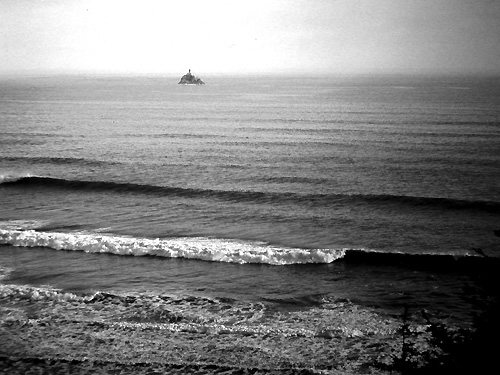I have been reading about the snowstorm in New England, and hearing about snowfalls of several feet, which can take forever to recover from in cities; especially Boston with its narrow streets and parked cars. However, Boston is only three miles long and unless you’re heading across the river to Harvard, you can walk to work. In a couple of hours or so.
The snowstorm that struck the Midwest and the Northeast passed us by and we’ve had mild temperatures. Of course, it’s only a matter of time before we get hit, but we’ll take the mild weather and the beautiful sunsets for now.
However, we can’t have snow without a little poetry, and Henry Wadsworth Longfellow agrees with me:
Out of the bosom of the Air,
Out of the cloud-folds of her garments shaken,
Over the woodlands brown and bare,
Over the harvest-fields forsaken,
Silent, and soft, and slow
Descends the snow.
Even as our cloudy fancies take
Suddenly shape in some divine expression,
Even as the troubled heart doth make
In the white countenance confession,
The troubled sky reveals
The grief it feels.
This is the poem of the air,
Slowly in silent syllables recorded;
This is the secret of despair,
Long in its cloudy bosom hoarded,
Now whispered and revealed
To wood and field.
“Snow-Flakes”

Easier to find poetry about snow than about sunsets, as I found when I looked about. Other than:
Red sky in the morning,
sailor take warning.
Red sky at night,
sailor’s delight.
I think its because sunsets have their own beauty and anything to do with them — poetry, painting, or photography — is a given and a bit of a cheat. But I’ll take the cheat for now.

Of course, the sunset figures prominently into our fiction, particularly westerns. Cowboys would always ride off into the sunset when they’ve saved the day, which I thought was stupid.
I mean think about it: they ride in, get shot up, go against the bad guys 2 to 1, overcome against all odds, and just when the farmer’s daughter cries out, “My hero”, and we presume is feeling mighty grateful, the idiots ride off into the sunset.
I bet the horse had more sex. No wonder there’s no poetry about sunsets.

That’s not completely true, there are poems about sunsets. Emily Dickinson wrote a couple — she wrote on everything it seems — and I rather liked, “The Sunset Stopped on Cottages”:
The Sunset stopped on Cottages
Where Sunset hence must be
For treason not of His, but Life’s,
Gone Westerly, Today –
The Sunset stopped on Cottages
Where Morning just begun –
What difference, after all, Thou mak’st
Thou supercilious Sun?

Tired of sunsets yet? Just be glad I didn’t publish the other ten photos I took tonight, because the sky did put on a lovely show. I grabbed my camera and ran down outside, fighting my cat at the door — me out, her in — before standing out on the deck in bare feet snapping pictures.
The neighbors are used to it: they think I’m nuts, and maybe I am. Am I of age to be eccentric yet?
Oh who cares. I spend too much time worrying about what people think of me when they see me puttering about, and most likely they don’t think of me at all (which is very liberating, let me say).

The sky is pretty and so are the trees, but yes I do need new subjects, which means I’ll have to go look for them. New things to write about, too. Good.
And on that note, I’ll end with JRR Tolkien:
The Road goes ever on and on
Down from the door where it began.
Now far ahead the Road has gone,
And I must follow, if I can,
Pursuing it with eager feet,
Until it joins some larger way
Where many paths and errands meet.
And whither then? I cannot say.















